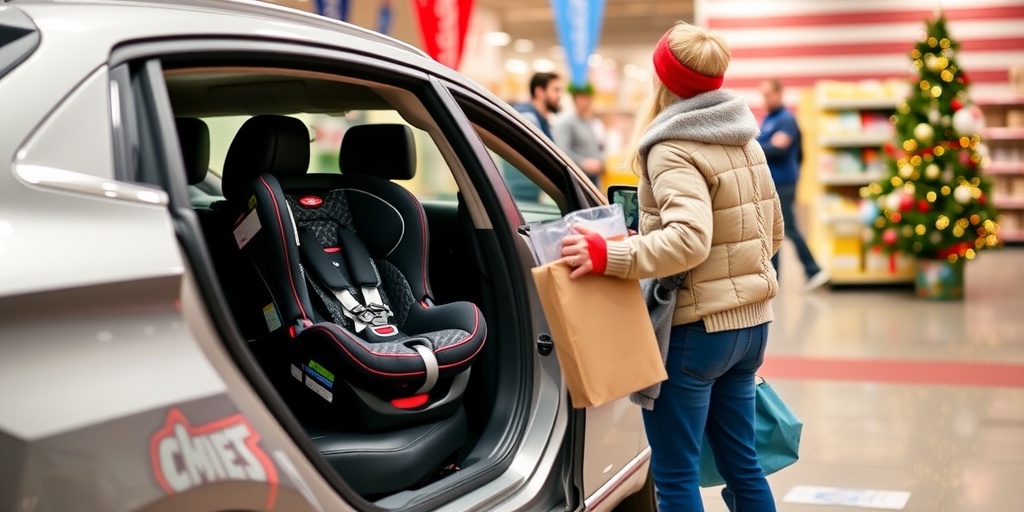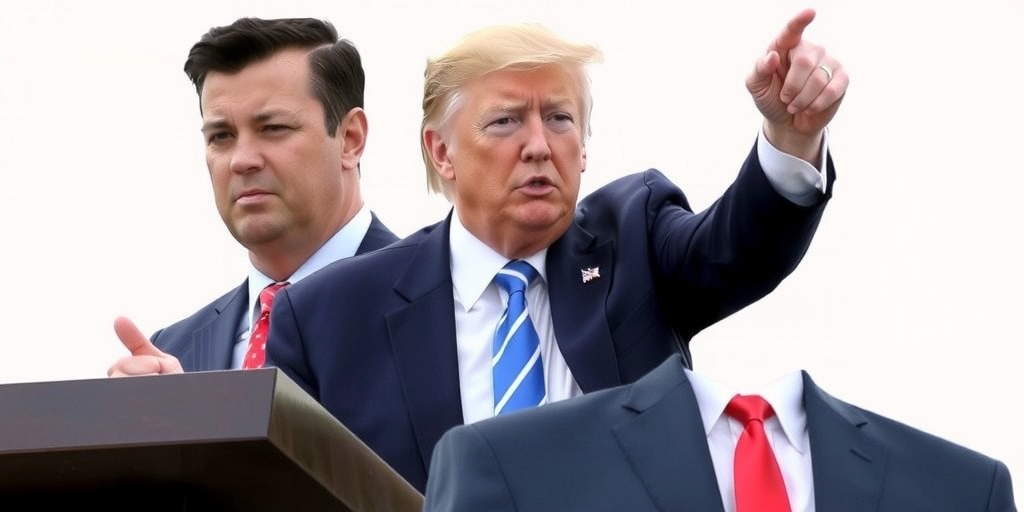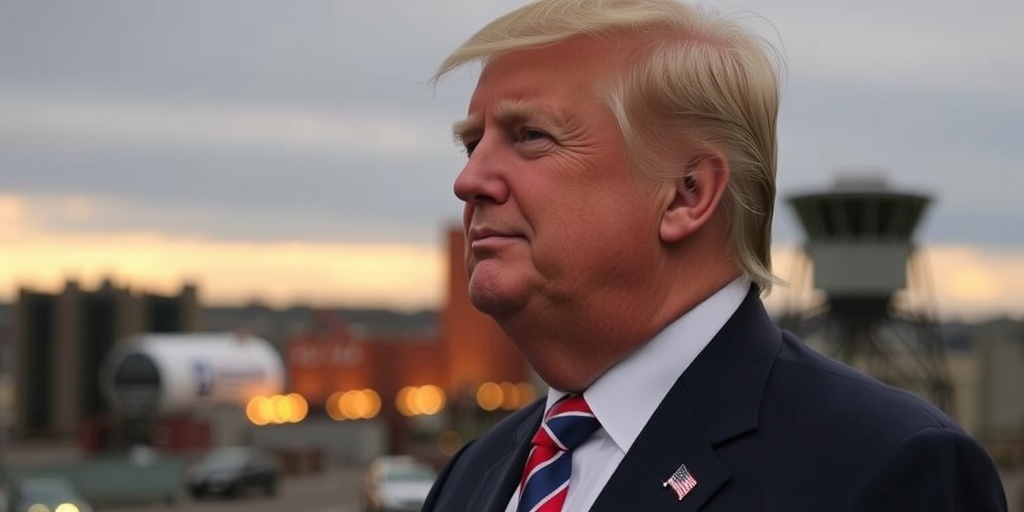Now Reading: Americans Rush to Buy Car Seats, iPhones, and Holiday Gifts Amid Tariff Increases
-
01
Americans Rush to Buy Car Seats, iPhones, and Holiday Gifts Amid Tariff Increases
Americans Rush to Buy Car Seats, iPhones, and Holiday Gifts Amid Tariff Increases

Consumers Rush to Buy Goods Amid Fears of Rising Tariffs
As trade tensions escalate between the United States and China, American consumers are reacting with urgency. Recent reports highlight a notable increase in consumer spending, particularly on foreign-made items, driven by fears of impending price hikes due to President Trump’s newly imposed tariffs. This surge in buying behavior is forcing many to rethink their purchasing strategies.
Emily Moen, a coffee shop manager from Omaha, discovered these concerns firsthand when she came across a TikTok video discussing how Trump’s tariffs could lead to increased prices on essential baby products. Pregnant and somewhat unprepared for shopping for her upcoming arrival, she quickly researched a car seat she had her eye on, produced by Graco and made in China. Alarmed that the current price of $200 might climb due to the tariffs, she made the purchase on Amazon the same day. "It was like an awakening to get this done now,” said the 29-year-old.
Echoing Moen’s sentiments, many consumers are unprepared and worried about the escalating trade war. Following the Trump administration’s announcement of a staggering 145 percent minimum tariff on all Chinese imports, shoppers have begun to flock to retail outlets to stock up on goods. This reaction mirrors past behavior during economic uncertainty, leading to a rush on items ranging from high-tech gadgets to basic groceries.
The recent policy changes included the termination of a loophole allowing goods valued under $800 to enter the U.S. tariff-free. With fears of added costs looming, consumers have noticeably accelerated their shopping, buying big-ticket electronics like iPhones and appliances. Reports indicated that spending at major retailers surged significantly immediately following the tariff announcements; for example, Apple saw a 20 percent increase in sales just days after the April 2 announcement.
This wave of consumerism is also evident in grocery stores, where sales for shelf-stable products soared. For instance, sales of canned vegetables increased by 23 percent, instant coffee by 20 percent, and ketchup by 16 percent compared to the previous week. Analysts believe the frenzy reflects not just strategic shopping but also a panic-buying mentality as consumers remain uncertain about the extent to which prices may rise.
“We are witnessing panic buying happening in response to this unique economic situation,” states Simeon Siegel, a retail analyst at BMO Capital Markets. Families across the country are debating future purchases, even discussing Christmas gifts months in advance. In various parents’ online forums, there are conversations about buying toys early to avoid potential price hikes, showcasing a preemptive strike against inflation.
Tom Barnard, a marketing director from Texas, emphasized the urgency of acting quickly. He recently helped purchase an iPhone for his mother before the model’s official release, motivated by fears that prices could rise once tariffs took effect. "The iPhone could get very expensive very quickly," he remarked, highlighting a growing consumer belief that delaying purchases may lead to regrettable costs later.
In line with this, a report from Earnest Analytics indicates that the increase in consumer spending at places like Home Depot and retail giants like Belk has also been positively influenced by this sense of urgency. The heightened concern over inflation and potential price increases has triggered many consumers to stockpile household necessities as well, reflecting a broader apprehension about the economic landscape.
For those who tend to prioritize purchasing American-made goods, the ongoing tariffs have created a dilemma. Bree Chaudoin, a lending support specialist from Normal, Illinois, shared her experience of deliberately upgrading her iPhone shortly after Trump’s election out of fear that prices would surge under new tariffs. She explained that she recently purchased more than $1,500 in camping gear made in China because alternatives produced domestically would have been significantly pricier.
The sudden spike in buyer activity has provided a short-term boost for many companies; however, analysts warn that these momentary gains might not hold. There is growing concern among company executives about a possible consumer pullback, with Wall Street economists revising growth forecasts downward amid fears of a recession. As households exhibit increased anxiety about inflation, consumer sentiment appears to be wavering.
Amidst these fluctuations, it’s clear that the current trade policies and their ramifications on prices have transformed consumer shopping behavior. As many families prepare for the potential of rising prices, the steady flow of goods continues in an attempt to navigate the uncertain economic landscape, demonstrating the profound influence that government decisions can have on everyday lives.
Stay Informed With the Latest & Most Important News
Previous Post
Next Post
-
 01New technology breakthrough has everyone talking right now
01New technology breakthrough has everyone talking right now -
 02Unbelievable life hack everyone needs to try today
02Unbelievable life hack everyone needs to try today -
 03Fascinating discovery found buried deep beneath the ocean
03Fascinating discovery found buried deep beneath the ocean -
 04Man invents genius device that solves everyday problems
04Man invents genius device that solves everyday problems -
 05Shocking discovery that changes what we know forever
05Shocking discovery that changes what we know forever -
 06Internet goes wild over celebrity’s unexpected fashion choice
06Internet goes wild over celebrity’s unexpected fashion choice -
 07Rare animal sighting stuns scientists and wildlife lovers
07Rare animal sighting stuns scientists and wildlife lovers




















